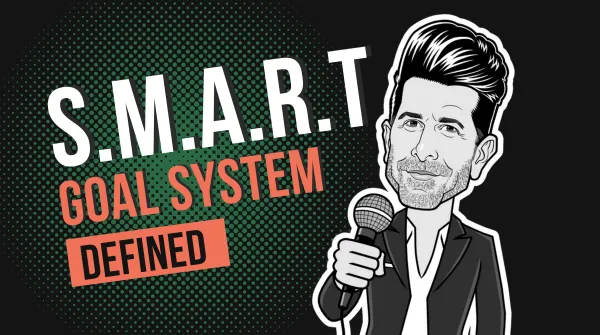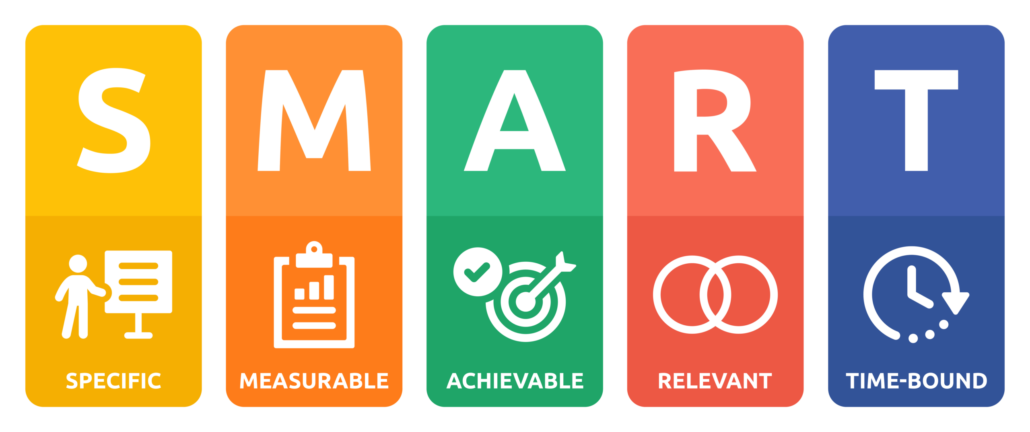SMART Goals – The Goal System Defined

Goals should be specific, measurable, attainable, realistic and timely that is where the term SMART Goals derives from.
In other words, in the goal setting process make sure you use the SMART system.
S…….Specific
M……Measurable
A…….Attainable
R…….Realistic
T……..Timely

Specific
A specific goal has a much greater chance of being accomplished than a general goal. To set a specific goal you must answer the six “W” questions:
- Who: Who is involved?
- What: What do I want to accomplish?
- Where: Identify a location.
- When: Establish a time frame.
- Which: Identify requirements and constraints.
- Why: Specific reasons, purpose or benefits of accomplishing the goal.
SMART Goal Example
A general goal would be, “Get in shape.” But a specific goal would say, “Join a health club and workout 3 days a week.”
Measurable
Establish concrete criteria for measuring progress toward the attainment of each goal you set.
When you measure your progress, you stay on track, reach your target dates, and experience the exhilaration of achievement that spurs you on to continued effort required to reach your goal.
To determine if your goal is measurable, ask questions such as…
- How much?
- How many?
- How will I know when it is accomplished?
Attainable
When you identify goals that are most important to you, you begin to figure out ways you can make them come true. You develop the attitudes, abilities, skills, and financial capacity to reach them. You begin seeing previously overlooked opportunities to bring yourself closer to the achievement of your goals.
You can attain most any goal you set when you plan your steps wisely and establish a time frame that allows you to carry out those steps. Goals that may have seemed far away and out of reach eventually move closer and become attainable, not because your goals shrink, but because you grow and expand to match them. When you list your goals you build your self-image. You see yourself as worthy of these goals, and develop the traits and personality that allow you to possess them.
Realistic
To be realistic, a goal must represent an objective toward which you are both willing and able to work. A goal can be both high and realistic; you are the only one who can decide just how high your goal should be. But be sure that every goal represents substantial progress.
A high goal is frequently easier to reach than a low one because a low goal exerts low motivational force. Some of the hardest jobs you ever accomplished actually seem easy simply because they were a labor of love.

Timely
A goal should be grounded within a time frame. With no time frame tied to it there’s no sense of urgency. If you want to lose 10 lbs, when do you want to lose it by? “Someday” won’t work. But if you anchor it within a timeframe, “by May 1st”, then you’ve set your unconscious mind into motion to begin working on the goal.
Your goal is probably realistic if you truly believe that it can be accomplished. Additional ways to know if your goal is realistic is to determine if you have accomplished anything similar in the past or ask yourself what conditions would have to exist to accomplish this goal.
T can also stand for Tangible – A goal is tangible when you can experience it with one of the senses, that is, taste, touch, smell, sight or hearing.
When your goal is tangible you have a better chance of making it specific and measurable and thus attainable. Which creates the SMART Goals system.
For more information on various types of business goals view this article by Indeed: Types of Business Goals That Drive Success.



Leave a Reply
Want to join the discussion?Feel free to contribute!